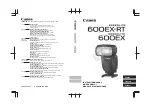
9
5.3.8
Available parameters for user modes
■
Sensitivity: This parameter changes the brightness control. A low value
(-) causes the camera to reduce the brightness if there is a small bright
object. A high value (+) causes the camera to reduce the brightness if
the average of the complete image is too bright
■
Focus: This parameter decreases (-) or increases (+) the digital detail
enhancement.
■
Color: This parameter decreases (-) or increases (+) the color satura-
tion.
■
Gain: This parameter decreases (-) or increases (+) the maximum value
of the dynamic gain. The camera reduces the dynamic gain automati-
cally if there is enough light in the image.
■
Background: This parameter decreases (-) or increases (+) the bright-
ness of dark backgrounds.
■
Red detail: This parameter decreases (OFF) or increases (LOW, HIGH)
the digital enhancement especially for fine red details.
■
Image size: This parameter defines the image size for the brightness
measurement area. Settings are AUTO, LARGE, MEDIUM, SMALL.
■
Fiberscope: The setting ON will deactivate the digital detail enhance-
ment to minimize the moiré effect for fiberoptical endoscopes.
5.3.9
Remote control of an external documentation system
To connect an external documentation system (e.g. Aesculap Eddy DVD or
any other suitable documentation system) to the mono jack for remote
control
16
labeled REMOTE:
►
Connect remote control cable PV968 between the camera and the doc-
umentation system.
►
For remote-controlling the external documentation system, press blue
Push button
3
on camera head
5
.
6.
Validated reprocessing procedure
6.1
General safety instructions
Note
Adhere to national statutory regulations, national and international stan-
dards and directives, and local, clinical hygiene instructions for sterile pro-
cessing.
Note
For patients with Creutzfeldt-Jakob disease (CJD), suspected CJD or possi-
ble variants of CJD, observe the relevant national regulations concerning
the reprocessing of products.
Note
Mechanical reprocessing should be favored over manual cleaning as it
gives better and more reliable results.
Note
Successful processing of this medical device can only be ensured if the pro-
cessing method is first validated. The operator/sterile processing techni-
cian is responsible for this.
The recommended chemistry was used for validation.
Note
If there is no final sterilization, then a virucidal disinfectant must be used.
Note
For the latest information on reprocessing and material compatibility see
also the Aesculap extranet at www.extranet.bbraun.com
The validated steam sterilization procedure was carried out in the Aesculap
sterile container system.
6.2
General information
Dried or affixed surgical residues can make cleaning more difficult or inef-
fective and lead to corrosion. Therefore the time interval between appli-
cation and processing should not exceed 6 h; also, neither fixating pre-
cleaning temperatures >45 °C nor fixating disinfecting agents (active
ingredient: aldehydes/alcohols) should be used.
Excessive measures of neutralizing agents or basic cleaners may result in
a chemical attack and/or to fading and the laser marking becoming
unreadable visually or by machine for stainless steel.
Residues containing chlorine or chlorides e.g. in surgical residues, medi-
cines, saline solutions and in the service water used for cleaning, disinfec-
tion and sterilization will cause corrosion damage (pitting, stress corro-
sion) and result in the destruction of stainless steel products. These must
be removed by rinsing thoroughly with demineralized water and then dry-
ing.
Additional drying, if necessary.
Only process chemicals that have been tested and approved (e.g. VAH or
FDA approval or CE mark) and which are compatible with the product’s
materials according to the chemical manufacturers’ recommendations
may be used for processing the product. All the chemical manufacturer's
application specifications must be strictly observed. Failure to do so can
result in the following problems:
■
Optical changes of materials, e.g. fading or discoloration of titanium or
aluminum. For aluminum, the application/process solution only needs
to be of pH >8 to cause visible surface changes.
■
Material damage such as corrosion, cracks, fracturing, premature aging
or swelling.
►
Do not use metal cleaning brushes or other abrasives that would dam-
age the product surfaces and could cause corrosion.
►
Further detailed advice on hygienically safe and material-/value-pre-
serving reprocessing can be found at www.a-k-i.org, link to Publica-
tions, Red Brochure – Proper maintenance of instruments.












































